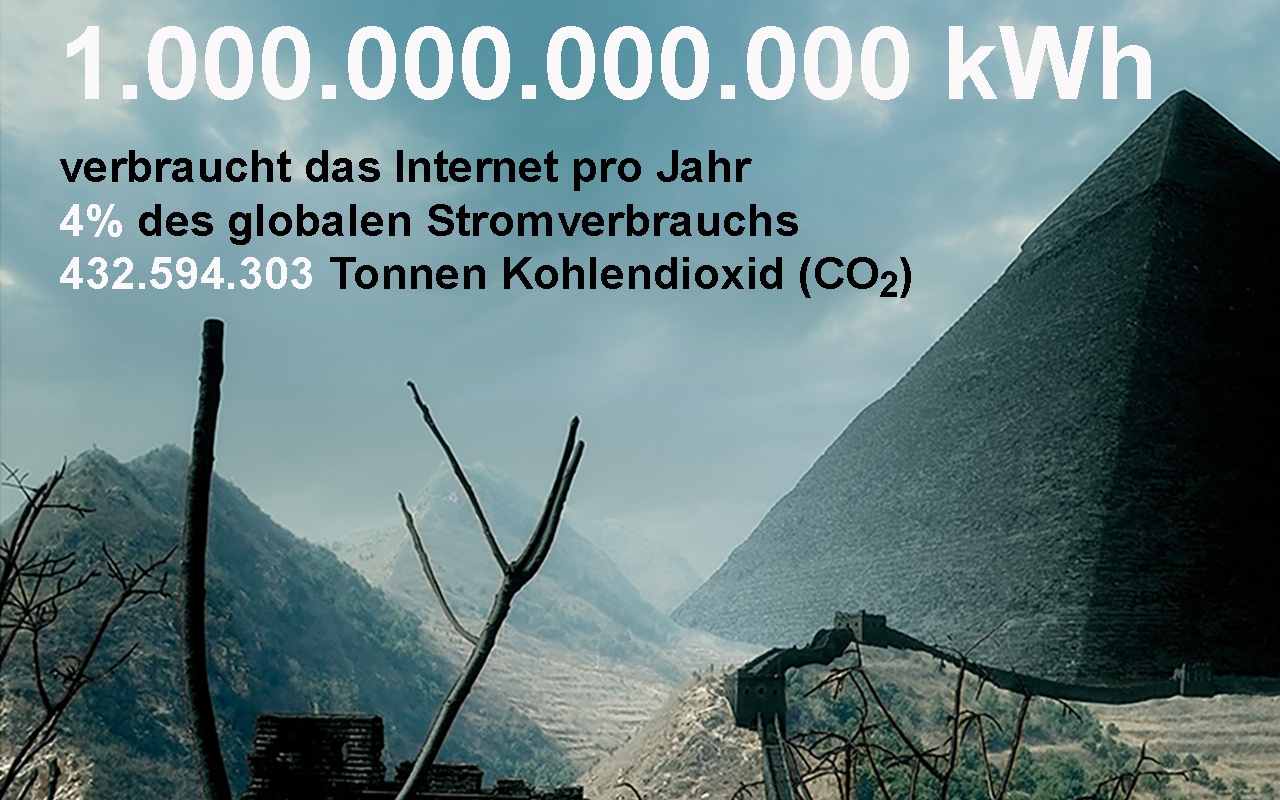Minimal Carbon Internet
A project by Michael Saup in cooperation with karlsruhe.digital and the ZKM | Karlsruhe
The internet enables free access to knowledge and free global communication. But the world pays a price for this. For websites, streaming services, social media and email need electricity - about 1 PWh (petawatt hour) per year. 1 petawatt hour, that's 4% of global electricity consumption, generating about 432,594,303 tonnes of carbon dioxide (CO2). If the internet were a country, it would be the third largest consumer of electricity in the world. What can we do?
The project
The Minimal Carbon Internet project by artist Michael Saup shows that there are options for action. Saup – who has been researching the energy consumption of digital culture since 1999 – demonstrates with the sub-project Minimal Carbon Site how the electricity consumption of websites can be radically minimised. Minimal Carbon Site not only creates an awareness of the connection between information and energy. Minimal Carbon Site is a concrete technical solution: Saup has developed a version of the website karlsruhe.digital that reduces its footprint by 95% – from 635 MB to 32 MB – while maintaining the same appearance and functionality. Minimal Carbon Site proves that it would be possible to significantly reduce the energy consumption of the internet just by optimising websites.
Here's how it works
The website avoids: tracking, advertising, third-party traffic, auto-playing videos, video backgrounds, outdated browsers and fancy scripts and effects.
Instead, the website uses: state-of-the-art image and video formats, resized images, data compression, no web fonts, only browser fonts, compression of HTML, Javascript and CSS source code and a green, sustainable server infrastructure.
These measures have positive side effects: The website becomes faster. The SEO ranking increases. They improve the use in regions with lower bandwidth and for people who can only afford a low data volume. The website can also no longer be hacked.
Further information: Minimal Carbon Site
"Assuming the Great Wall of China was built entirely of lignite briquettes and electricity was generated only from lignite, the entire wall would be just large enough to generate the amount of electricity needed to run the internet for the duration of a year. If one were to build a pyramid from the lignite needed for one year, it would have a side length of 1.5 kilometres and be 905 metres high. If you lined up all these briquettes, you could walk from the earth to the centre of the sun. The internet is the largest coal-fired combustion engine in the world.
We are burning the fossil memory of the world for the new digital memory. As long as that happens, no new form of terrestrial intelligence can emerge."
– Michael Saup
Organization / Institution
karlsruhe.digital and ZKM | Center for Art and Media
Concept
-
Sponsor
